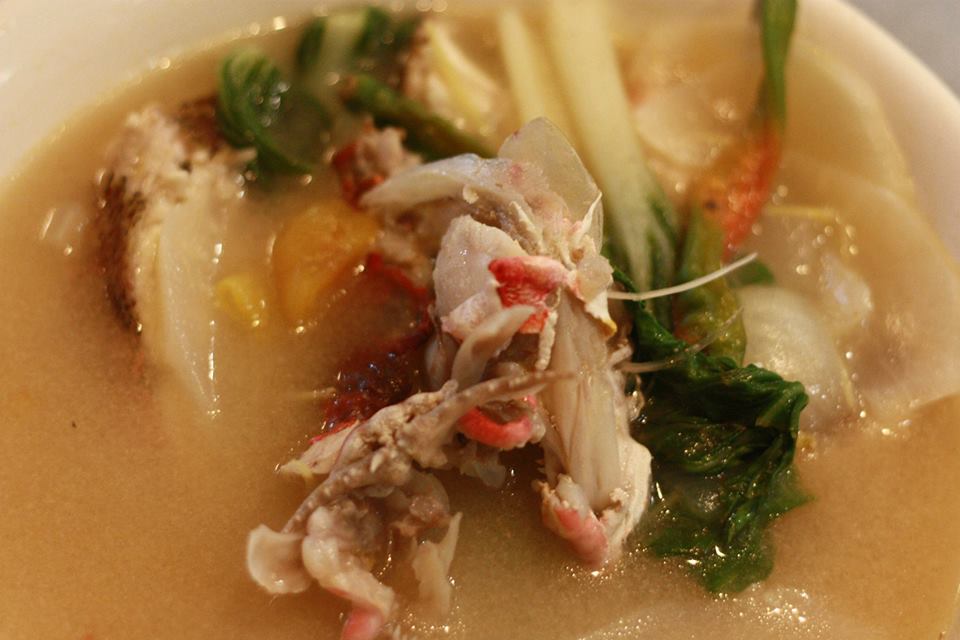Sinigang Nasda Sa Miso Fish Stew With Miso Recipe – Healthy & Delicious
Sinigang, a staple in Filipino cuisine, traces its origins to the early days of Filipino history. Known for its unique sour broth, Sinigang traditionally uses tamarind or other souring agents like calamansi or green mangoes. Fish, pork, shrimp, or beef typically accompany the broth, creating a versatile and beloved dish. The introduction of Sinigang na Isda sa Miso marks a significant evolution in this classic dish, blending traditional elements with new influences.
Miso’s Influence on Filipino Cuisine
Miso, a Japanese fermented soybean paste, brings umami depth to dishes it graces. When incorporated into Sinigang, miso adds a rich, savory note that complements the tangy broth. This fusion began as a result of cultural exchanges and showcases how Filipino cuisine embraces global flavors. By integrating miso into Sinigang, Filipinos have created a dish that honors tradition while exploring new culinary horizons. The result is a flavorful, hearty stew that appeals to diverse palates.
Key Ingredients of Sinigang Na Isda Sa Miso
Choosing the Right Fish
The choice of fish impacts the dish’s flavor and texture. Common choices include milkfish or bangus, tilapia, and mackerel, each contributing unique taste profiles. Milkfish offers a slightly sweet flavor, tilapia provides a mild taste, while mackerel adds a rich, oily note. Choose fresh fish with clear eyes and firm flesh to ensure the best quality.
Importance of Miso and Tamarind
Miso and tamarind are central to Sinigang na Isda sa Miso. Miso, a fermented soybean paste from Japan, adds umami depth, enhancing the savory profile of the stew. It’s available in several varieties, such as white (shiro), yellow (shinshu), and red (aka), each offering different intensity levels.
Tamarind provides the classic sourness characteristic of Sinigang. It balances the miso’s richness, creating a harmonious blend of flavors. Use fresh tamarind pods or tamarind paste for the best results. Assess the balance, as both ingredients must complement rather than overpower each other.
Essential vegetables typically include daikon radish, eggplant, tomatoes, and water spinach or kangkong. These add layers of texture and nutrition. Daikon radish brings a subtle peppery flavor, eggplant adds a slight bitterness, tomatoes contribute acidity, and kangkong offers a tender crunch. Each component enriches the overall taste, staying true to Sinigang’s tradition while introducing the dimension brought by miso.
How to Prepare Sinigang Na Isda Sa Miso
Step-by-Step Cooking Guide
Start by gathering fresh ingredients. You need 1.5 lbs of fish like milkfish, tilapia, or mackerel, 3 tablespoons of miso paste, 2 tomatoes (quartered), 1 medium-sized onion (sliced), 3 cups of water, 1 cup of tamarind juice, and sliced vegetables like daikon radish, eggplant, and kangkong.
- Prepare the Fish: Clean and cut the fish into serving pieces. Rinse and pat dry.
- Boil Water: In a pot, bring 3 cups of water to a boil.
- Add Aromatics: Add sliced onion and tomatoes to the boiling water. Cook for 5 minutes.
- Mix in Miso: Dissolve 3 tablespoons of miso paste in the pot. Stir until fully incorporated.
- Add Tamarind Juice: Pour in 1 cup of tamarind juice. Let it simmer for 2 minutes.
- Cook Vegetables: Add daikon radish, eggplant, and other vegetables. Simmer for 5 minutes.
- Add Fish: Gently add the fish pieces. Cook for another 10 minutes or until the fish is fully cooked.
- Adjust Seasoning: Taste and adjust with fish sauce or salt as needed.
- Finish with Greens: Add kangkong leaves and simmer for an additional minute.
- Use Fresh Tamarind: If possible, use fresh tamarind pulp for maximum flavor. Soak and press to extract juice.
- Balance with Miso: Use the correct ratio of miso to tamarind juice. Typically, 3 tablespoons of miso with 1 cup of tamarind juice ensures a balanced taste.
- Adjust Gradually: When adding tamarind juice, do so gradually. Taste the stew frequently to avoid overpowering sourness.
- Complement with Tomatoes: Tomatoes contribute to the stew’s sour profile. Ensure they are ripe for optimal flavor.
- Consider Alternatives: If tamarind is unavailable, use calamansi or lemon juice as a substitute. Add in small amounts to maintain control over the sourness.
Health Benefits of Sinigang Na Isda Sa Miso
Nutritional Value of Key Ingredients
Sinigang na Isda sa Miso offers numerous nutritional benefits, mainly due to its ingredients. Fish like milkfish, tilapia, and mackerel provide high-quality protein, omega-3 fatty acids, and essential vitamins such as B12 and D. Miso, a fermented soybean paste, is rich in protein, probiotics, and nutrients like vitamins B2, B12, and vitamin K.
Vegetables like daikon radish, eggplant, tomatoes, and kangkong add essential nutrients. Daikon radish offers vitamin C, fiber, and folate. Eggplant contains antioxidants, vitamins A, B6, and C, and dietary fiber. Tomatoes supply vitamin C, potassium, and lycopene. Kangkong, or water spinach, is packed with vitamins A and C, iron, and calcium.
Sinigang’s Dietary Advantages
Sinigang na Isda sa Miso supports various dietary advantages. The dish is low in calories and high in nutrients, making it ideal for those aiming for a balanced diet. The omega-3 fatty acids from fish contribute to heart health, reducing inflammation and lowering the risk of chronic diseases. Probiotics in miso aid digestion, boost the immune system, and enhance gut health.
The presence of fiber-rich vegetables promotes healthy digestion and helps maintain blood sugar levels. Vitamins and minerals in the vegetables contribute to overall health, supporting the immune system, skin health, and bone strength. Anti-inflammatory properties of tomatoes and eggplant help reduce the risk of inflammation-related conditions.
By incorporating Sinigang na Isda sa Miso into your diet, you can enjoy a nutritious, flavorful meal that supports overall health and well-being.
Serving and Pairing Sinigang Na Isda Sa Miso
Traditional Serving Suggestions
Serve Sinigang na Isda sa Miso piping hot. This enhances the flavors and provides comfort. Use deep bowls to hold the broth, fish, and vegetables. Place a small bowl of rice beside the main dish. White rice complements the savory and sour notes of the stew. Add fish sauce (patis) and calamansi on the side. These condiments let you adjust the taste to your preference.
Sprinkle fresh green onions and cilantro. This adds color and a fresh aroma. Include a choice of traditional Filipino side dishes. Examples are fried fish, fresh lumpia, or a simple salted egg and tomato salad. These enhance the overall dining experience.
Pairing with Other Filipino Dishes
Pair Sinigang na Isda sa Miso with classic Filipino dishes. Start with crispy fried pork belly (lechon kawali). The crunch and richness of pork complement the broth’s tanginess. Another good choice is grilled eggplant (inihaw na talong). This vegetable offers a smoky flavor that balances the stew’s tartness.
Include side dishes like mango and shrimp paste (bagoong). The sweet-salty combination contrasts the sourness of the Sinigang. Try pairing with steamed vegetables like okra and bitter melon (ampalaya). These provide textural variety and additional nutritional value. For drinks, serve calamansi juice or a light beer. These beverages cleanse the palate and augment the dish’s flavors.
Conclusion
Sinigang na Isda sa Miso is a delightful fusion of Filipino and Japanese culinary traditions that brings both flavor and nutrition to your table. Its unique combination of sour and umami flavors, along with its health benefits, makes it a standout dish for any meal. Serving it with traditional Filipino sides and complementary beverages only enhances the experience. Whether you’re a seasoned cook or a novice in the kitchen, this dish is sure to impress and satisfy. Enjoy the rich, comforting taste of Sinigang na Isda sa Miso and make it a staple in your culinary repertoire.






